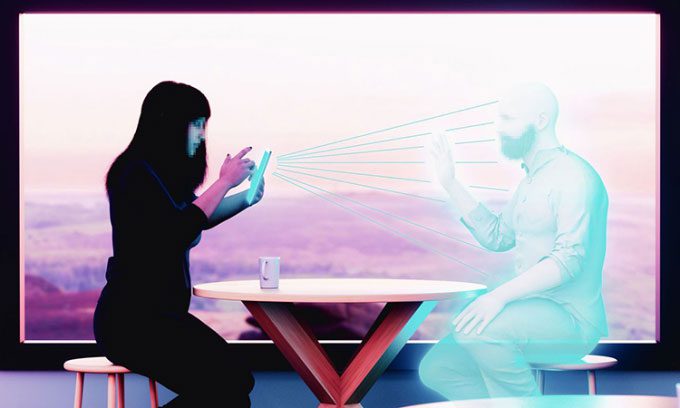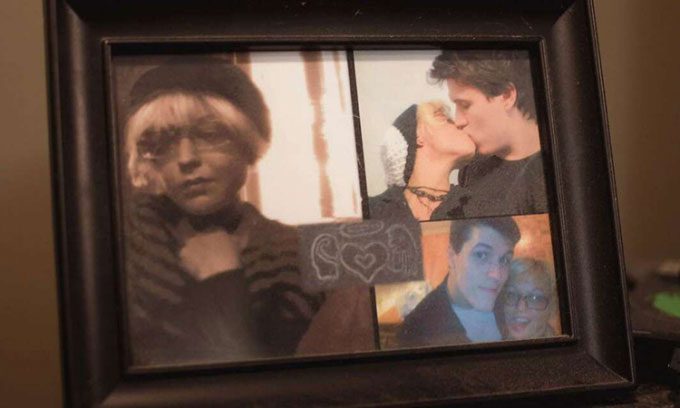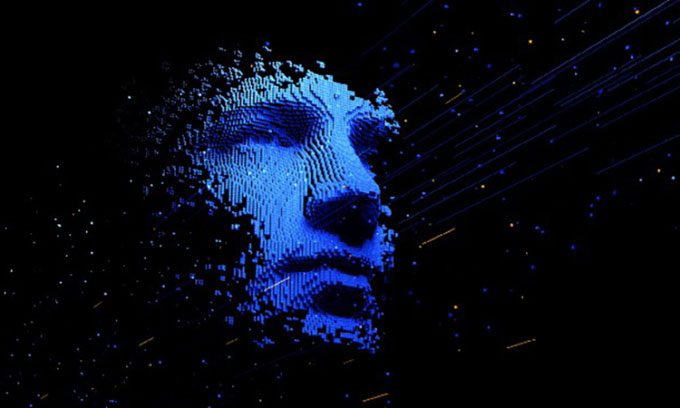The advancement of AI technology could create living replicas of deceased individuals, allowing them to converse with loved ones or even manage companies.
What if Abraham Lincoln could address the U.S. Congress today? Or what if the patriarch of a family could help manage household affairs alongside his descendants?

Illustration of a human simulation created by technology. (Photo: Chase Voorhees/Wall Street Journal)
Researchers and businesses are beginning to consider how <strongartificial intelligence (AI) can create replicas of the deceased—not static copies, but vibrant digital entities capable of conversing with relatives and even participating in corporate management.
Many startups predict a growing demand for digital personas and are developing programs to meet this need, such as Replika, an app that mimics a person in the form of a chatbot, and HereAfter AI, an app that records people’s life stories and uses them to create an integrated replica within a smart speaker.
Even tech giants seem to recognize the potential of this technology. In late 2020, Microsoft was granted a patent for a method to create chatbots that simulate specific individuals from the past or present, such as friends, relatives, acquaintances, celebrities, fictional characters, or historical figures.
Benefits of Immortal Digital Characters
Digital characters exist in various forms, from chatbots and electromechanical robots to projections that can move and speak realistically. AI often plays a central role in building and training them to interact with humans.
Three-dimensional holograms of deceased musical artists like Roy Orbison and Tupac Shakur have performed on stage for years. In 2020, Joshua Barbeau, a 33-year-old Canadian, used a website called Project December to create a chatbot that simulated his late fiancée, Jessica Pereira, and conversed with it.
As digital characters become more lifelike, they can learn and evolve beyond the death of the original, adapting to new events. This would create immortal digital personas—not only preserving their personality but allowing them to continue existing in a virtual form.

Photos of Joshua Barbeau and Jessica Pereira in a frame at Barbeau’s home. (Photo: Chloe Ellingson/San Francisco Chronicle)
Such immortal characters could continue interacting with family, friends, and descendants long after they have passed away, providing information for historical research and genealogy. They could also be utilized on spacecraft exploring space, capable of traveling farther and longer than any ordinary person, David Burden, CEO of Daden—a UK company specializing in chatbot development—shared with the Wall Street Journal.
Burden noted that living individuals could use digital replicas of themselves to send emails and chat with colleagues, allowing them to complete more tasks, or use their replicas to take over while they are on vacation. He also pointed out that a CEO like Elon Musk might want to use a digital persona to manage the company after their death.
“Founders of organizations and businesses may not want to relinquish control. So why not empower something that will continue to grow the business in line with their thinking?”, Burden said.
The Dark Side of Resurrection
Virtual characters are not perfect replicas as they often rely on speech, writing, social media posts, and various other sources that may not accurately reflect a person’s essence. AI-generated digital personas will lack consciousness.
Society may struggle with questions about who owns the likeness of a deceased individual and the income it generates. What rights should virtual characters have? Does their existence mean that people will not fully grieve the loss of friends or loved ones they simulate?
Virtual characters can also be created without the original person’s permission or knowledge, as long as there is enough public data to train the AI to mimic that person. Characters from the past may be resurrected whether they want to be or not.
High-quality replicas of celebrities or politicians could influence future events and shape the world, even after they have passed away. Davide Sisto, a philosopher at the University of Turin (Italy), hopes that no politician will have a virtual replica that continues to operate indefinitely after the original has died.

Digital characters could cause many problems in the real world. (Photo: Pinkeyes)
Another issue is who will be responsible for the actions of a digital character, especially if it causes negative consequences. AI experts tackle this complex question with two main approaches. First, responsibility lies with those who design and develop the AI system if they do so according to their preferences and worldview. Second, machine learning systems are context-dependent, thus, moral responsibility for their actions should be distributed among all agents interacting with them.
Sara Suárez-Gonzalo, a postdoctoral researcher at the University of Oberta de Catalunya (Spain), leans toward the first option. In the case of Jessica’s chatbot, the stakeholders include the AI research company OpenAI, developer Jason Rohrer, and Joshua Barbeau. The Project December website, developed by Rohrer, is based on GPT-3, OpenAI’s language model capable of generating text.
It is challenging to hold OpenAI accountable as the company has explicitly prohibited the use of its system for sexual, romantic, self-harm, or bullying purposes, Suárez-Gonzalo shared with Conversation. Meanwhile, Rohrer and Barbeau would bear greater responsibility.
Caution in Creating Digital Replicas
It may take a long time before truly convincing replicas become widely available. A character simulating Maggi Savin-Baden, a professor at the University of Worcester (UK), was created in 2020. This digital character consisted of a head and shoulders with a voice emanating from a chatbot.
Savin-Baden asked professionals and strangers to interact with the replica and with the real person. The results showed that not everyone was deceived. “They said some parts were really like me, but others were not at all,” she shared.
According to Suárez-Gonzalo, developing a digital version of the deceased should meet certain conditions. First, both the person being simulated and those customizing and interacting with the replica must voluntarily agree on a detailed description of the design, development, and use of the replica. Second, development and use that do not adhere to what the simulated person agreed to or violate their dignity should be prohibited. Finally, those involved in the development of the replica and those benefiting from it must be held accountable for potential consequences.





















































